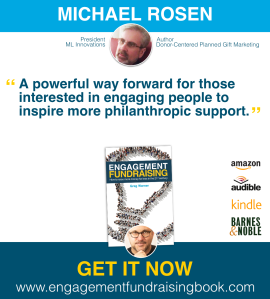Most charity pundits, mainstream media, and press serving the nonprofit sector got it wrong. Sadly, none of them is admitting their mistake, and many are continuing to advance a false narrative. However, I always told you the truth, and I’ll continue to do so.
I’ve often encouraged you not to overuse statistics in your appeals. But, we can all certainly benefit from reading lots of illuminating statistics.
In 2017 and 2018, most pundits and the media were convinced that the Tax Cut and Jobs Act would result in up to a $21 billion decrease in philanthropic giving. In January 2018, I joined a tiny group of professionals who predicted the decrease in giving would be far less than that and giving might actually increase. This was not a guess on our part, but a well-educated expectation based on research, experience, and observation.
Now, with the release of Giving USA 2019, we know who was correct.
Overall, philanthropic giving in constant dollars INCREASED by $2.97 billion (0.7 percent) between 2017 and 2018, and now stands at $427.71 billion, the highest level of all time. Relative to Gross Domestic Product, giving remained at 2.1 percent, which is greater than the 40-year average of 2.0 percent.
 Despite the generally good news, the philanthropy scene is not entirely positive. When adjusting for inflation, giving in 2018 did decline by 1.7 percent, though that was much less than the doom and gloom estimates. Furthermore, giving by individuals as a share of overall philanthropy accounted for 68 percent; this is the first time since at least 1954 that it has fallen below 70 percent. In 2018, individual giving fell by 1.1 percent in constant dollars.
Despite the generally good news, the philanthropy scene is not entirely positive. When adjusting for inflation, giving in 2018 did decline by 1.7 percent, though that was much less than the doom and gloom estimates. Furthermore, giving by individuals as a share of overall philanthropy accounted for 68 percent; this is the first time since at least 1954 that it has fallen below 70 percent. In 2018, individual giving fell by 1.1 percent in constant dollars.
While the new tax code likely had an effect on charitable giving, we need to be careful not to overstate its impact. A number of factors have influenced giving:
New Tax Code. All or part of the decline in individual giving in 2018 could be due to donors taking action in advance of the tax law change. We saw this in 1986 when there was a spike in charitable giving in advance of the Reagan tax cuts in 1987.
In 2017, many donors likely front-loaded their philanthropic giving since they would no longer be able to deduct gifts beginning in 2018. In addition, many donors chose to bundle their philanthropy by contributing to Donor-Advised Funds at record levels in 2017. Together, these two factors might explain the 1.1 percent decrease in individual giving in 2018 compared to a 5.7 percent increase in 2017. If not for the new tax rules going into effect in 2018, some of those 2017 donations might have been made in 2018 instead.
The tax code might also affect giving in other ways that we just don’t see clearly at this point. Just as we had to wait until 1988 to see giving normalize following the Reagan tax cuts, we may need to wait another year or two to understand the full effect of the current tax code.
Decline in the Number of Donors. Since 2001, the percentage of US households contributing to charity has fallen steadily from a high of 67.63 percent to 55.51 percent in 2014, according to data from the Indiana University Lilly Family School of Philanthropy’s Philanthropy Panel Study. In other words, the new tax code is not responsible for a sudden decline in the number of donors. This trend has been going on for years.















